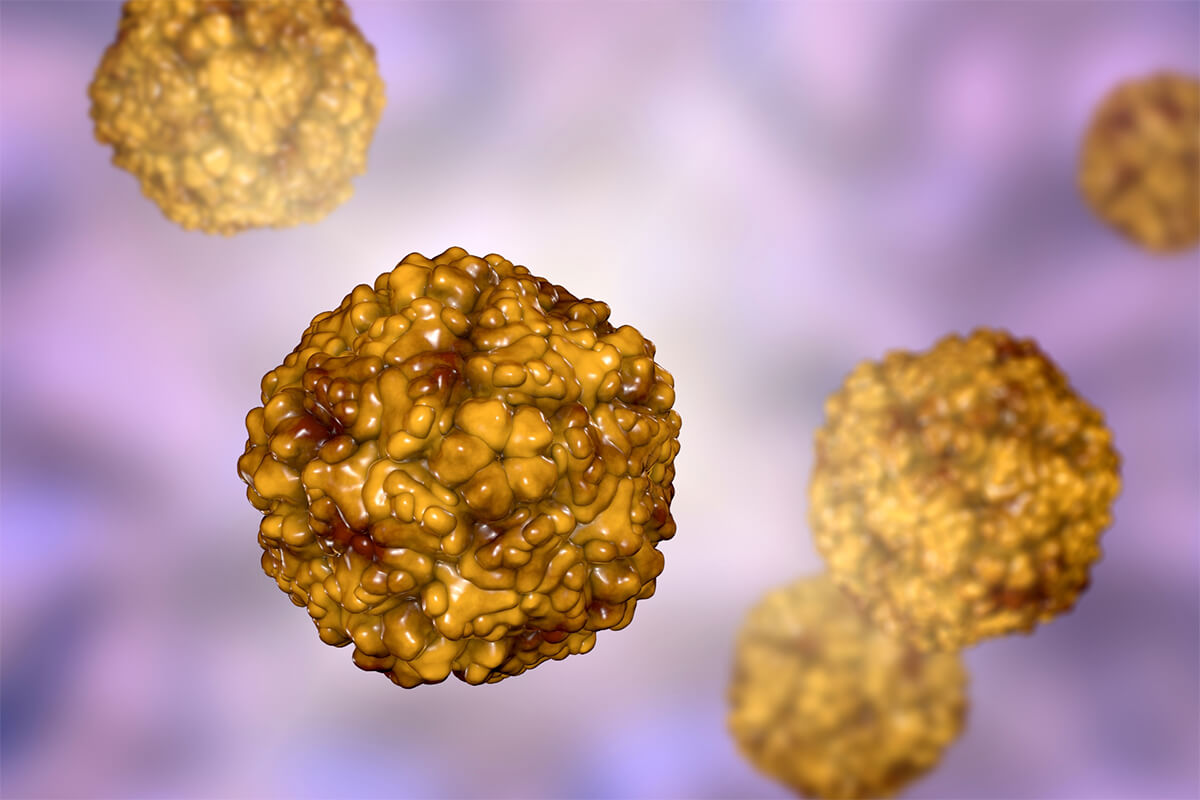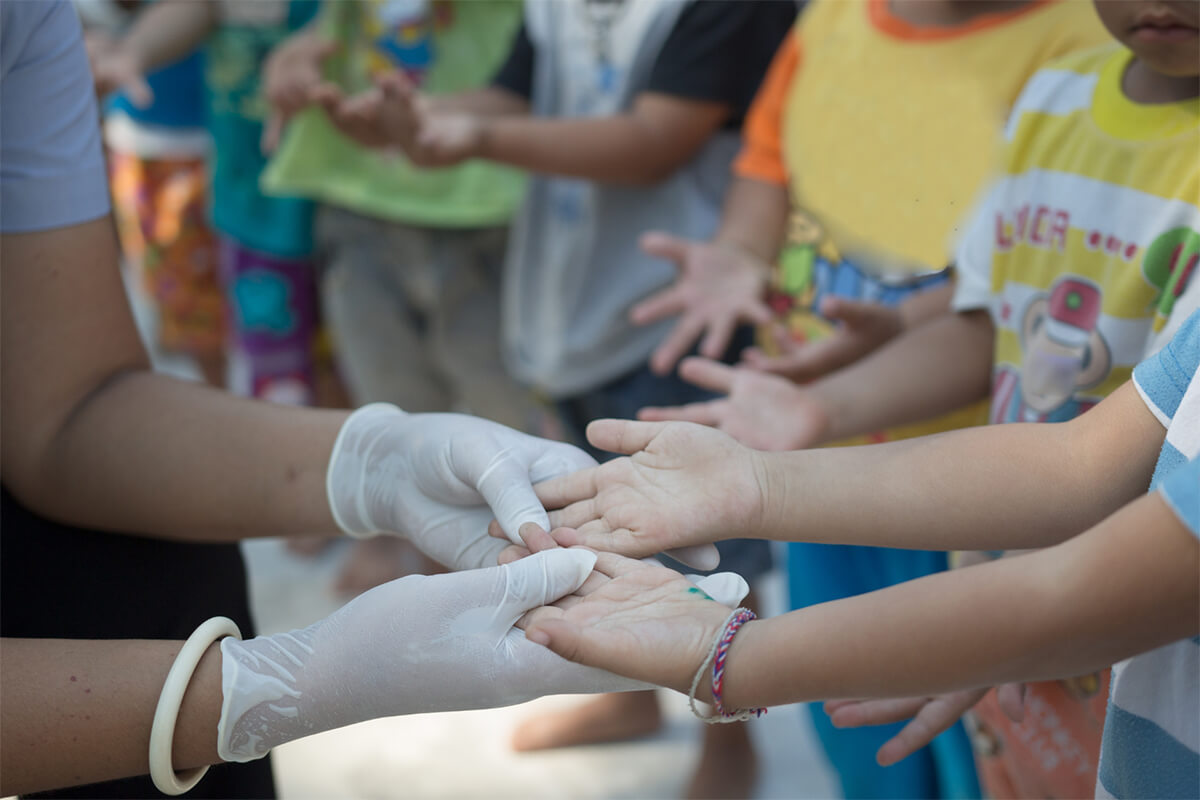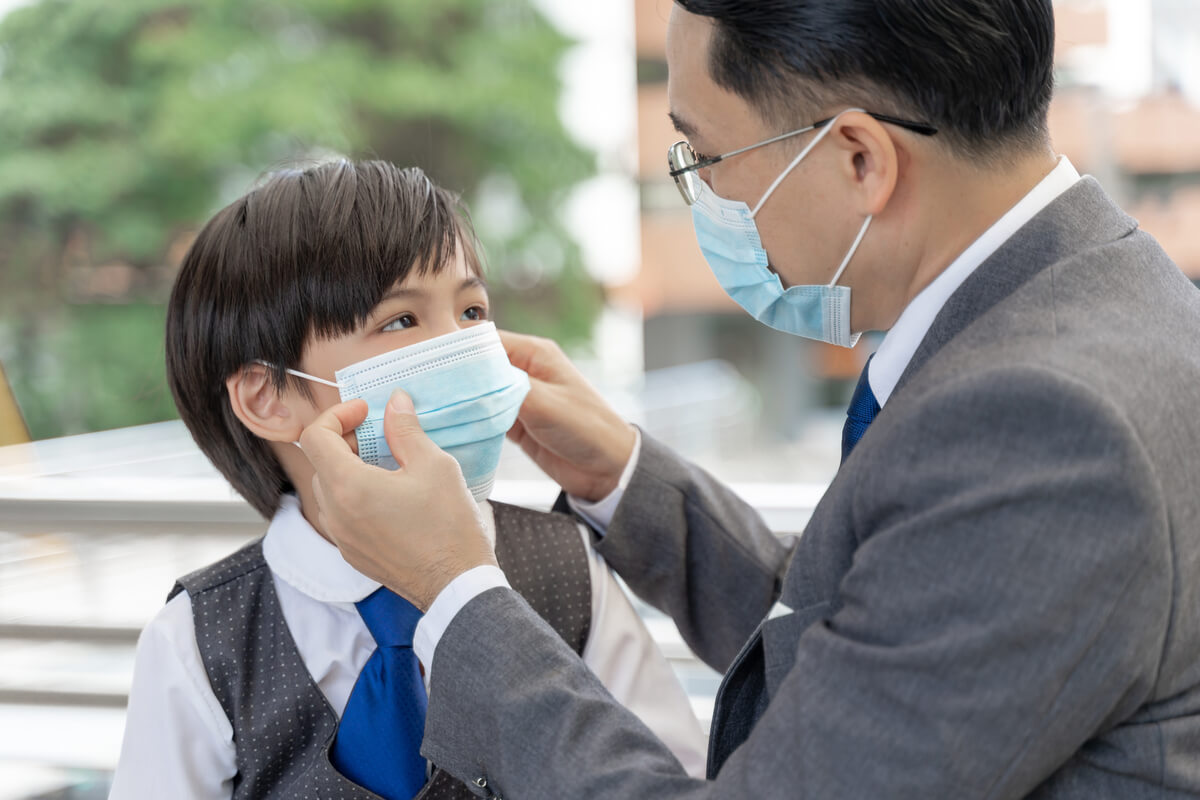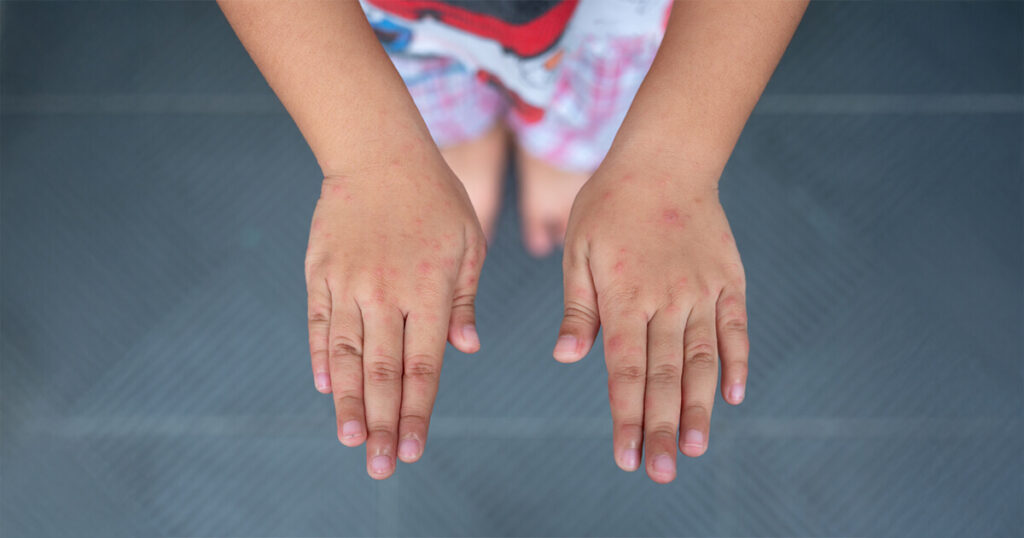Key Takeaways
- HFMD causes mouth sores, fever, and a rash on the hands and feet.
- The illness spreads easily through direct contact and poor hygiene.
- Good hygiene, rest, and fluids support recovery and reduce transmission.
Hand, foot, and mouth disease (HFMD) can catch you off guard, especially when it spreads quickly among children or within close contact groups. This common viral illness causes small sores in the mouth and a rash on the hands and feet, often leading to mild discomfort but rarely serious complications. You can usually manage HFMD at home with rest, fluids, and simple care while preventing its spread through good hygiene and awareness of how it transmits.
You might notice early signs like fever, sore throat, or reduced appetite before the telltale rash appears. Because the viruses that cause HFMD spread easily through saliva, nasal secretions, and contact with contaminated surfaces, understanding how it passes from person to person helps you protect your household. Simple actions—washing hands often, disinfecting shared items, and avoiding close contact with infected individuals—make a big difference.
Although HFMD most often affects young children, anyone can get it. Recognizing symptoms early and knowing when to seek medical advice keeps recovery smooth and prevents complications. With a calm, informed approach, you can care for yourself or your child confidently and limit the virus’s reach.
Key Symptoms of Hand, Foot, and Mouth Disease
Hand, foot, and mouth disease (HFMD) often begins with fever and flu-like symptoms before progressing to painful mouth sores and a visible skin rash. You may also notice changes in appetite, irritability, or signs of dehydration as the illness develops.

Fever and High Fever
Fever is often the first sign of HFMD. It typically appears three to five days after exposure to the virus. Most people experience a mild to moderate fever, though some children may develop a high fever above 102°F (38.9°C).
You may also feel tired or unwell, similar to having a cold. The fever usually lasts one to two days before other symptoms appear.
Common accompanying symptoms:
- Sore throat
- Loss of appetite
- General discomfort or irritability
Keeping the body hydrated and managing temperature with doctor-approved fever reducers can help ease discomfort. If the fever lasts longer than three days or rises sharply, seek medical advice.
Mouth Sores and Sore Throat
Painful mouth sores are a hallmark of HFMD. They often start as small red spots inside the mouth, especially on the tongue, gums, and inner cheeks. These spots can turn into blisters that may break open and form shallow ulcers.
These sores can make swallowing painful, leading to reduced food and fluid intake. You may notice drooling or a preference for cold drinks due to the discomfort.
To reduce irritation:
- Offer cool, soft foods like yogurt or smoothies.
- Avoid acidic or spicy foods that can sting the sores.
- Encourage frequent sips of water to prevent dehydration.
A sore throat often develops alongside the mouth sores and may last several days before improving.
Skin Rash and Blisters
A skin rash usually appears soon after the fever and mouth sores. It commonly affects the palms of the hands, soles of the feet, and sometimes the buttocks, legs, or arms.
The rash may look like flat or slightly raised red spots, sometimes with small blisters containing fluid. These blisters are not usually itchy but can be tender to the touch.
| Common Rash Sites: Hands and Feet | |
|---|---|
| Typical Appearance | Red spots or blisters |
| Sensation | Mild tenderness |
| Common Rash Sites: Mouth Area | |
|---|---|
| Typical Appearance | Small ulcers |
| Sensation | Painful when eating |
| Common Rash Sites: Buttocks/Legs | |
|---|---|
| Typical Appearance | Flat red patches |
| Sensation | Usually painless |
Keep the affected areas clean and avoid breaking the blisters, as the fluid can carry the virus and spread infection.
Other Signs and Symptoms
Some people may experience loss of appetite, fatigue, or mild abdominal discomfort. Young children are at higher risk of dehydration, especially if mouth pain limits drinking.
Watch for these signs of dehydration:
- Dry mouth or lips
- Fewer wet diapers or less urine
- Unusual sleepiness or irritability
In rare cases, HFMD can cause complications like viral meningitis or temporary nail loss, though these are uncommon. Most people recover fully within 7 to 10 days with rest, fluids, and symptom relief.
Causes and Transmission
Hand, foot, and mouth disease (HFMD) develops after infection with specific viruses that target the mouth, hands, feet, and sometimes other areas of the body. You can contract it through direct contact with an infected person or by touching contaminated surfaces where the virus remains active for some time.

Common Viruses Responsible
HFMD most often results from enteroviruses, a group of viruses that includes coxsackievirus A16 and enterovirus 71. These are the leading causes of outbreaks in children.
Coxsackievirus A16 usually causes mild illness, while enterovirus 71 can occasionally lead to more severe symptoms such as neurological complications. Other coxsackievirus strains may also cause similar infections but tend to produce less widespread outbreaks.
These viruses thrive in the digestive and respiratory tracts. They can survive on hands, toys, and surfaces, which makes them easy to spread in childcare settings. Because there is no specific antiviral treatment or vaccine, understanding the source helps you take preventive steps like handwashing and surface cleaning.
How the Disease Spreads
The viruses that cause HFMD are highly contagious. You can become infected through:
| Route of Transmission: Respiratory droplets | |
|---|---|
| Example of Exposure | When someone coughs, sneezes, or talks near you |
| Route of Transmission: Direct contact | |
|---|---|
| Example of Exposure | Touching blisters or saliva from an infected person |
| Route of Transmission: Fecal-oral route | |
|---|---|
| Example of Exposure | Changing diapers or using contaminated toilets |
| Route of Transmission: Surface contact | |
|---|---|
| Example of Exposure | Handling toys, doorknobs, or utensils with virus particles |
Viral shedding can continue even after symptoms fade, meaning you might still spread the virus for days or weeks. Frequent handwashing and avoiding close contact with infected individuals reduce the risk of transmission.
Incubation Period and Contagious Stages
The incubation period usually lasts 3 to 7 days after exposure. During this time, the virus multiplies quietly before symptoms begin.
You are most contagious in the first few days after symptoms appear, especially when fever, mouth sores, and rash are present. However, the virus can remain in your body and continue to spread through stool for several weeks.
Children often return to school once they feel well, have no fever, and can manage drooling caused by mouth sores. Maintaining good hygiene throughout recovery helps prevent passing the infection to others.
Who Is at Risk?
You face the highest risk of hand, foot, and mouth disease (HFMD) if you care for or spend time around young children, work in group settings, or have a weakened immune system. The illness spreads easily through close contact, shared surfaces, and poor hygiene.

Infants and Young Children
Infants and children under 5 years old experience HFMD most often. Their immune systems are still developing, and they frequently share toys, food, or other objects that can carry the virus.
Symptoms in this age group usually include fever, mouth sores, and a rash on the hands, feet, or buttocks. While symptoms are mild in most cases, dehydration can occur if mouth sores make swallowing painful.
You can lower your child’s risk by washing hands often, cleaning toys regularly, and keeping them home when they have a fever or open blisters. Because immunity after infection may not last long, children can get HFMD more than once.
Adults and Immunity
Adults can catch HFMD, though it happens less often. If you have never been exposed to the virus or your immune system is weakened, your risk increases.
Common risk factors include chronic illness, pregnancy, or immunosuppressive medications. Adults who do become infected may have mild or even no symptoms, but they can still spread the virus to others through saliva, stool, or blister fluid.
If you work with children or in healthcare, you should practice strict hygiene and disinfect surfaces frequently. Pregnant individuals should contact a healthcare provider if exposed, as rare complications can occur depending on the stage of pregnancy and personal health history.
Settings with Higher Risk
HFMD spreads quickly in environments where people interact closely. Child care centers, preschools, and schools often report outbreaks because children share spaces and objects throughout the day.
Other high-risk settings include households with young children, playgroups, and community facilities where hygiene may be difficult to maintain. The virus can survive on surfaces like doorknobs, toys, and tables for several hours.
To reduce transmission, follow these steps:
| Prevention Step: Hand hygiene | |
|---|---|
| Example | Wash hands for 20 seconds with soap and water |
| Prevention Step: Surface cleaning | |
|---|---|
| Example | Disinfect toys, changing tables, and high-touch areas |
| Prevention Step: Isolation | |
|---|---|
| Example | Keep infected individuals home until fever-free and feeling well |
Diagnosis and Recognizing HFMD
You can usually identify hand, foot, and mouth disease (HFMD) through visible symptoms and a short clinical evaluation. In some cases, a laboratory test such as a stool sample helps confirm the cause and rule out other viral infections.

Clinical Assessment
A healthcare provider typically diagnoses HFMD based on your symptoms and physical findings. The illness often presents with small red spots or blisters on the hands, feet, and inside the mouth. You might also have a low-grade fever, sore throat, and mild fatigue before the rash appears.
During the assessment, the provider checks for mouth ulcers (enanthem) and skin lesions (exanthem). The pattern and location of these lesions help distinguish HFMD from other viral rashes or allergic reactions.
You should mention if you or your child recently had contact with someone showing similar symptoms. This information supports a clinical diagnosis because HFMD spreads easily through saliva, nasal secretions, and stool.
In most cases, no additional tests are needed. The illness is mild and self-limiting, resolving within 7–10 days with supportive care.
Laboratory Testing and Stool Sample
If symptoms are unclear or severe, a laboratory test can confirm HFMD. The most common method involves analyzing a stool sample, throat swab, or vesicle fluid to detect enteroviruses such as Coxsackievirus A16 or Enterovirus 71.
A stool sample is useful because the virus remains present in feces for several weeks after symptoms improve. This helps identify ongoing viral shedding and potential contagion risks.
Laboratory testing also helps rule out other causes of fever and rash, such as varicella or herpes simplex virus.
You usually do not need these tests for mild cases, but they can be valuable during outbreaks or when complications arise.
Treatment and Home Care
You can ease discomfort from hand, foot, and mouth disease by managing fever and pain, keeping up with fluids and gentle foods, and knowing when medical attention is necessary. Supportive care helps recovery and prevents complications.

Managing Fever and Pain
Because this illness is viral, antibiotics do not help. Focus on comfort and symptom relief.
You can give acetaminophen or ibuprofen to reduce fever and ease sore throat or body aches. Follow dosing instructions carefully and avoid aspirin in children, as it can cause serious side effects.
Use a topical oral anesthetic to relieve mouth pain if your healthcare professional approves. Avoid throat sprays or lozenges in very young children because of choking risks. Keep your child rested and dressed lightly to prevent overheating.
A cool environment and soft bedding can also help your child rest more easily while the fever subsides.
Hydration and Nutrition
Blisters in the mouth can make eating and drinking uncomfortable. Encourage frequent small sips of water, milk, or electrolyte solutions to prevent dehydration. Watch for signs of dehydration, such as dry lips, fewer wet diapers, or dark urine.
Offer soft, bland foods that go down easily, such as yogurt, mashed potatoes, or oatmeal. Avoid acidic or spicy foods like citrus fruits, tomato sauces, and soda, which can irritate mouth sores.
Cold items such as ice pops, smoothies, or sherbet can soothe soreness and make swallowing easier. If your child can rinse without swallowing, a warm saltwater rinse may help reduce mouth pain and swelling.
When to Seek Medical Help
Most cases clear up within a week, but you should contact your healthcare provider if symptoms worsen or new issues appear. Seek help if your child develops persistent high fever, severe mouth pain, or trouble swallowing or breathing.
Call your doctor if your child shows signs of dehydration, such as little or no urine output, dry mouth, or unusual sleepiness. Also seek care if the rash spreads beyond the hands, feet, and mouth, or if sores become infected.
Prompt evaluation ensures your child receives the right care and rules out other conditions that can resemble hand, foot, and mouth disease.
Prevention and Reducing Spread
You can lower the risk of hand, foot, and mouth disease (HFMD) by keeping hands clean, disinfecting shared items, and avoiding close contact when symptoms appear. These steps help stop the virus from spreading in homes, schools, and childcare settings.

Good Hygiene Practices
Wash your hands often with soap and warm water for at least 20 seconds, especially after using the toilet, changing diapers, or wiping a child’s nose. Handwashing removes virus particles that can linger on skin.
Encourage children to wash their hands before meals and after playing outside. Use alcohol-based hand sanitizer when soap and water are not available, but supervise young children to ensure safe use.
Avoid touching your eyes, nose, and mouth with unwashed hands. Teach children to cover coughs and sneezes with a tissue or their elbow, then wash hands immediately.
Keep personal items separate. Do not share utensils, cups, towels, or toothbrushes, as the virus can spread through saliva or mucus. Practicing these habits consistently helps reduce infection in your household and community.
Disinfecting Surfaces and Toys
HFMD viruses can survive on surfaces for hours or even days. Clean and disinfect frequently touched objects such as doorknobs, toys, light switches, and countertops.
Use a bleach solution (for example, 1 tablespoon of bleach per 4 cups of water) or an EPA-approved disinfectant. Wipe surfaces thoroughly and allow them to air dry. Always follow the product’s safety instructions.
Wash toys and items that children put in their mouths daily with warm, soapy water. For soft toys, check the manufacturer’s cleaning guidelines.
Keep cleaning cloths and sponges sanitized or replace them often, since they can harbor viruses. Regular disinfection reduces the chance of spreading the virus through contact with contaminated objects.
Limiting Contact During Contagious Period
HFMD is most contagious during the first few days of illness, but the virus can still spread for days or weeks through saliva or stool.
Keep children home from daycare or school until they are fever-free, feel well, and can control drooling if they have mouth sores.
Avoid hugging, kissing, or sharing food with anyone who shows symptoms. Adults who are infected should also limit close contact with others, especially infants or pregnant individuals.
Dispose of tissues and diapers carefully, then wash your hands. These steps help protect others while you or your child recover.

